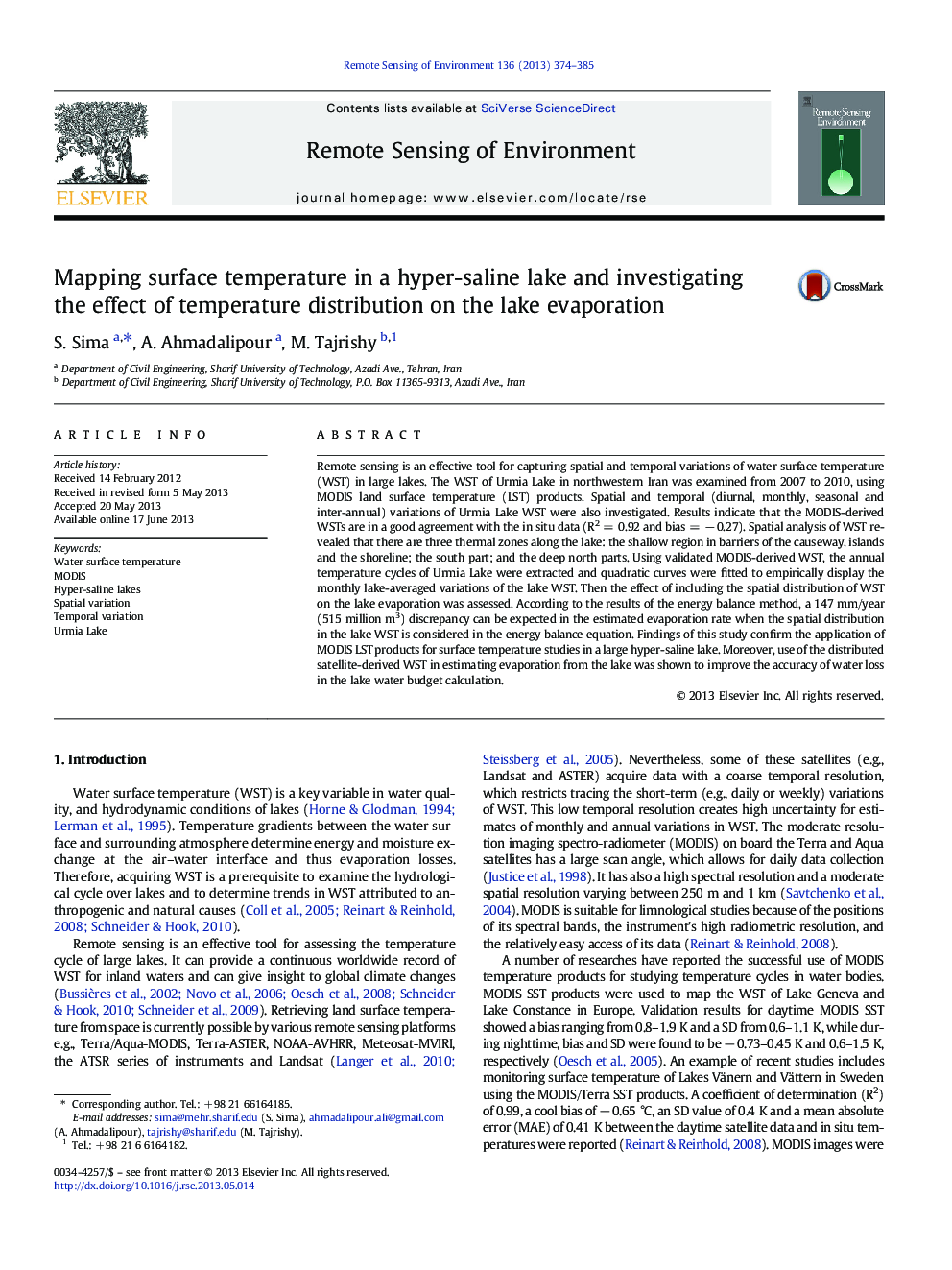| کد مقاله | کد نشریه | سال انتشار | مقاله انگلیسی | نسخه تمام متن |
|---|---|---|---|---|
| 6347431 | 1621264 | 2013 | 12 صفحه PDF | دانلود رایگان |
- Water surface temperatures of Urmia Lake were extracted using MODIS-LST data.
- MODIS-derived surface temperatures were validated against in situ measurements.
- Spatio-temporal variations of the lake temperature were examined.
- The annual temperature cycles of the lake were displayed by quadratic curves.
- Evaporation estimates using point and distributed temperatures were compared.
Remote sensing is an effective tool for capturing spatial and temporal variations of water surface temperature (WST) in large lakes. The WST of Urmia Lake in northwestern Iran was examined from 2007 to 2010, using MODIS land surface temperature (LST) products. Spatial and temporal (diurnal, monthly, seasonal and inter-annual) variations of Urmia Lake WST were also investigated. Results indicate that the MODIS-derived WSTs are in a good agreement with the in situ data (R2 = 0.92 and bias = â 0.27). Spatial analysis of WST revealed that there are three thermal zones along the lake: the shallow region in barriers of the causeway, islands and the shoreline; the south part; and the deep north parts. Using validated MODIS-derived WST, the annual temperature cycles of Urmia Lake were extracted and quadratic curves were fitted to empirically display the monthly lake-averaged variations of the lake WST. Then the effect of including the spatial distribution of WST on the lake evaporation was assessed. According to the results of the energy balance method, a 147 mm/year (515 million m3) discrepancy can be expected in the estimated evaporation rate when the spatial distribution in the lake WST is considered in the energy balance equation. Findings of this study confirm the application of MODIS LST products for surface temperature studies in a large hyper-saline lake. Moreover, use of the distributed satellite-derived WST in estimating evaporation from the lake was shown to improve the accuracy of water loss in the lake water budget calculation.
Journal: Remote Sensing of Environment - Volume 136, September 2013, Pages 374-385
